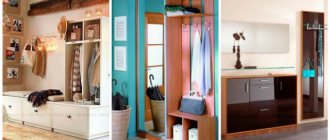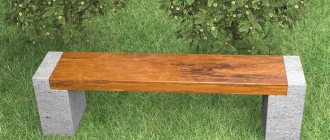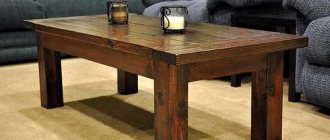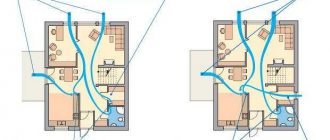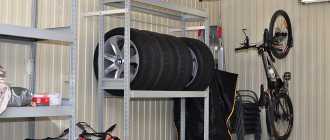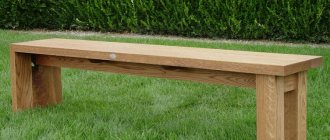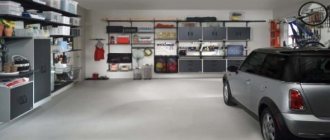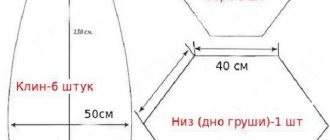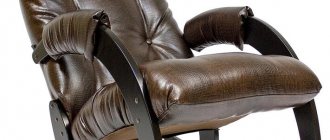Why is wood preferred?
Given the variety of materials used to make garden furniture, the best option is wood. It is preferred for its ease of processing and affordability.
- In addition, the wooden bench is not heavy, so it can be easily moved around the site.
- Sitting on a wooden bench while drinking tea is much more comfortable than sitting on a metal or plastic surface.
- Due to its low thermal conductivity, wood does not heat up or cool down quickly. Even in hot weather, its temperature remains average.
If the technology for assembling wooden parts is correctly followed, the result will be a voluminous, strong and durable structure. All its elements can be easily mechanically affected. Even if you have no experience in making a bench, giving it the desired shape will not be difficult.
Under the influence of precipitation, as well as as a result of damage by various insects and bacteria, the bench can become unusable and rot. Therefore, it is very important to take proper care of it.
Place for installation of the structure
Before you start making the selected bench option, you must first prepare the location of the structure; for this, it is recommended to take into account some points:
- The device is intended for relaxation and the surrounding environment must match - a quiet place away from the passage, preferably in the shade.
- When sitting down, the vacationer should feel free space and a landscape pleasing to the eye.
- To avoid insect bites, it is recommended to locate the location away from areas of moisture accumulation.
- The bench should be aesthetically combined in appearance with other nearby buildings.
Requirements for a future shop
The constructed bench model should have the following properties:
- Comfort. To make the bench comfortable, it is better to make it with a back or armrests on which you can lean.
- Reliability. The bench must be safe when exposed to heavy loads. Therefore, it is necessary to use high-quality wood and fastenings.
- Moisture resistance and resistance to temperature changes. The bench is usually installed in an open space, so it will have to withstand all seasons of weather. Therefore, it must be free of defects and damage.
To ensure that the product meets all the required characteristics, only high-quality, well-dried material is used in its manufacture. Damp wood is unsuitable.
Precautionary measures
Once the choice of design type has been made, it should be taken into account that among the entire variety of various types of benches and benches, there are a number of general safety rules:
- All materials used during assembly, regardless of metal, wood, plastic, must have a perfectly smooth surface to avoid splinters, burrs, etc., getting into the skin.
- It is better to refrain from having sharp corners and protruding elements in the design.
- The height of the seat should be safe in case a child falls.
Materials for building a bench
- Boards;
- Supports;
- Beam for reinforcement;
- Marker, level, tape measure;
- Self-tapping screws;
- Nails;
- Wooden pins;
- Wood glue;
- Fine-grained abrasive;
- Priming;
- Brush;
- Varnish or oil paint;
Workplace
In order for the selected design to turn out as intended, the work site must be properly prepared:
- For ease of marking and cutting, a wide platform is needed that does not restrict movement.
- Lighting must be sufficient.
- It is necessary to provide access to the electrical network.
- It is advisable to have a vice or clamps.
Design ideas
To create a beautiful natural corner of nature on your site, when making a bench with your own hands, various styles are used:
- Original design. Homemade benches look wonderful with wicker fences. You can make the back in the form of a dense weave of branches.
- Moroccan style The product will be colorful if the details are decorated with carvings;
- Chinese style. The design is complemented with bamboo.
- British style. Involves making a bench from solid wood species such as oak and ash. They decorate it with intricate patterns.
Any wooden bench can be transformed with textiles. For example, pillows and bedspreads. It will feel like home.
Location
The first problem that needs to be solved is choosing a location for the bench. It affects the material of the structure. For example, for an old garden with large branchy trees, wood products are suitable; for a small area not heavily planted with trees and shrubs, small openwork structures are recommended.
If you look online for examples of photos of benches in the country, you will see that they are often an integral part of gazebos, verandas and summer areas. If you are planning to do something similar, then make sure that all the details are made in the general style.
Choose a place for the bench so that it offers a pleasant view. It’s unlikely that you’ll want to admire your neighbors’ fence or the walls of your barn.
It is advisable to choose places in front of lakes or rivers, flower beds, etc. The main thing is that the surrounding objects attract and please the eye, help you relax and put you in a positive mood.
It is advisable that the bench be located in the shade. It is placed under the crowns of large trees or under canopies. Remember that it acts as a place for rest and relaxation.
You can put benches next to the beds. There are several advantages here. Firstly, the owners of the site will be able to monitor the growth of the crop. Secondly, the bench is suitable for taking a few minutes’ rest from physical labor (digging, watering, harvesting).
Don't forget about decorative decorations. Have you made a simple bench with your own hands? Place flowering shrubs around it. Flower beds are also suitable for decoration. They are placed on a raised platform or a special platform is created from bricks, tiles or logs.
Bench options
No backrest. This is a simple shop. The manufacturing assembly process includes the following steps:
- Legs. Cut 4 pieces from the board. Saw off the internal corners to stabilize the bench. Using two bars, the legs are sequentially secured with wood screws.
- Supports. The legs are connected using a beam made of timber.
- Seats. Boards are placed on the supports, leaving a gap of one centimeter. Screw them to the ends of the legs. The edges of the seat should protrude by 10 cm.
- Strengthening. For stability, side strips of arbitrary length are screwed to the bench. To do this, use a marker to mark the points and grooves for the slats. Insert the planks and secure them with nails.
With log legs
Collection is carried out in the following sequence:
- Boards for sitting are cut to the same length. You can round the edges. Place the boards at equal distances. Make marks at the places where the legs are attached. Do not drill holes through the marks.
- The logs for the legs are made equal in length. Measure the distance between the holes in the boards for the seat. Measurements are taken on the first row of logs, and non-through holes are made. In all other rows, holes are drilled in a checkerboard pattern, with a mirror image. The logs are connected to each other using wooden pins treated with wood glue. The seat is attached to the legs.
Corner shop
Ideal option for a small area. The bench takes up little space. Made from two separate benches.
The assembly method is as follows:
- First step. Preparing parts from boards.
- Second step. Two separate benches are assembled from the parts. The legs are screwed on both sides of the support. The seat is nailed to the frame so that it protrudes about five centimeters from the edge.
- Third step. The benches are connected in the form of the English letter “L” using steel brackets.
Wooden pallet bench
Such a bench is assembled from pallets as follows:
- To make the back and seat, the pallet is cut into two parts. A little more for the seat, a little less for the back. They are fastened with self-tapping screws.
- To increase strength and stability, struts are attached to the resulting structure on both sides.
- Legs are made from the remaining boards and attached to the base.
Types of benches
There are many types of benches. The master brings something special and unusual to the appearance of this simple element for the garden. However, all models can be divided according to some common characteristics.
Benches without backrest
This type is considered the simplest, as it consists only of a seat and several supports. Only this can all be implemented in different ways.
- We have before us a reliable, but not very attractive solution. However, the creator of this design still provided for a certain asymmetry - one edge of the seat protrudes beyond the legs, and the other is level with them. The bench is made of thick integrated boards and laminated veneer lumber. Externally, the material is roughly processed. This bench is suitable for many rustic styles, such as American country.
Simple wooden bench without back
- This bench is made of wood and concrete was used for the supports. Such composite structures look good in many landscape design styles, for example, high-tech, minimalism or loft. Concrete parts have clear geometric shapes. Against their background, the varnished board contrasts perfectly and looks very advantageous. Such a bench will also be very stable, but extremely heavy - moving it to a new place will be difficult.
Concrete wooden bench legs
- The back of this model is purely symbolic, so we will assume that it does not exist at all. It is not clear whether it will be comfortable, but it definitely looks impressive. Frame type construction. The basis was steel strips, which were looped and sheathed with a narrow lath. For stability at the bottom, additional stops are welded from a steel corner.
Outdoor benches made of metal and wood
A common disadvantage of benches without a back is the inability to completely relax while resting. You have to either keep your back tense, or create support with your hands on the seat or legs.
Benches with wooden backs
These models have a complicated structure, but they are more pleasant to relax on.
- A master of his craft clearly put a lot of effort into this model. The building material used was wooden beams, unprocessed branches and boards, which were given a rounded shape. All lumber is treated to appear aged and untreated by man. The absence of right angles and straight lines hints at unity with nature. Even the seat itself is slightly rounded inward along a wide radius.
Wooden bench with backrest for 2 people
- To achieve an aged effect, the wood is brushed. All soft fibers are removed from the surface of the material. This reveals its internal structure. A beautiful relief remains, which is further emphasized when processed with paints and varnishes or during firing. On this bench there are brushed boards in a composition with raw cuts of the trunk.
A trunk cut was used for the backrest
- Such designs are not suitable for every garden. Some styles value lightness and grace. An example of such a shop is shown in the photo below. The bench is clearly of factory origin, but if you have the right tools, you can do something like this yourself. In the photo there is clearly a lack of flowering vegetation around the bench.
Lightweight bench made of treated lumber
Assembly of such benches is also not the most difficult. Next, drawings will be presented and methods for their implementation will be described.
Bench with table
Such seats are installed mainly on terraces (read the article about arranging a terrace in a dacha), verandas and gazebos. The combination of furniture pieces forms the finished dining area.
- The photo shows an option for children. The tabletop is mounted on trusses with widely spaced legs. Crossbars are installed across them, to which the suspended bench seats are attached. Such a bench does not require a lot of material; its design is quite simple. In this case, the parts are securely connected to each other.
Wooden garden tables and benches for children
- These benches will withstand more serious loads, since they are not transferred to the table body, as in the previous case - the base under the structure is loaded. In fact, we see three separate objects connected at the bottom by a common strap. This solution gives stability to the thin legs of the bench. The seats and table top are made in an interesting way - a neat frame is formed from the board, the inside of which is filled with flooring. It looks very neat and beautiful.
How to make a wooden bench with a table for 4 adults
- The next model is complicated by the fact that it has backrests. The seats are held in place by common jumpers. It will be awkward to sit down and leave such a table. And if you consider that a backrest has also been added, then the options for this are even more limited.
These wooden benches have comfortable backs
. In general, the inconvenience of placement is a drawback of all such structures. Different people have their own sizes, so hosting guests at such a table can be a bad decision. Also, these beautiful wooden benches require a large and flat area for installation, so they are rarely placed on the ground.
Bench-sofa
This is the same bench with a back, but there are design differences. Firstly, soft pillows are always laid on top of the seat and under the back, secondly, they are made lower and are not placed in front of the dining tables, and thirdly, the seat is made deeper so that you can literally lounge on it.
- Like the previous option, these benches, due to their large dimensions, are installed on spacious terraces. This sofa is made from sanded and varnished boards. The pillows are stuffed with several layers of foam rubber and have removable covers so they can be washed (read the article on how to make pillows for garden furniture).
Bench-sofa corner
- Such structures usually have angular shapes, so processed timber of the correct cross-section is used for their manufacture. They do not differ in elegant shapes, so assembly will not be difficult - it is enough to build a strong frame, which is then covered with boards. These sofas look good in new style gardens.
Sofa with closed sides
- Old pallets are suitable as the main material for such a sofa - their shape and design correspond to the style of similar structures. Furniture made from pallets is a godsend for a loft-style garden. This material is inexpensive and very durable.
Wooden bench made from old chairs
Sometimes there are chairs left on the farm that are useful for making a rather comfortable bench. If you have two identical chairs, you can safely assemble it.
The assembly process is divided into:
- Disassembling chairs. Only the parts with the back and legs are left.
- The backs are connected using a box of bars of the required section.
- They make a frame that will provide the bench with reliability. Install it at a distance of 20 cm from the floor.
- Cut out the seat.
- Install the seat on the frame.
You can add interesting ideas to any of the manufacturing methods based on your experience working with wood.
In the end, all that remains is to saturate your creation with special preparations for protection, and then coat it in 2 layers with waterproof wood varnish or oil paint for external work.
Scheme and drawing
DIY drawings of a garden bench with a back will differ depending on the materials used. All assembly schemes are quite simple, and even a novice master can handle this work.
Experts advise following the standards:
- seat height – 40-50 cm;
- seat width – 50-55 cm;
- back height – 35-50 cm.
However, the parameters can be changed to suit individual needs. For beginners in carpentry, it is better to choose simple forms of products.
The design itself has a very simple structure, so anyone can handle the technology of its creation.
Photo of a homemade bench
Tools
Note! You can tighten screws with a screwdriver and saw boards the old fashioned way with a jigsaw, but with a power tool things will go faster and easier.
It is possible that not all the tools will be needed; it is worth assessing the condition of the raw materials and the type of the final product.
To cut boards and saw beams, you should stock up on a jigsaw or a circular saw.
Jigsaw
It is most convenient to tighten screws with a screwdriver with a magnetic bit. If you plan to assemble furniture using nails, you should stock up on a regular or pneumatic hammer.
Cordless drill/driver
It is more convenient to connect some parts using clamps.
Clamp
To round sharp corners and remove roughness from wood, you will need a plane, a sander, and sandpaper.
Sander
For finishing we recommend using:
- linseed oil, if the bench will be in a bathhouse or room; Linseed oil for wood
- fire-bioprotective antiseptic if the furniture will be located outdoors and exposed to rain and snow. Fire-bioprotective antiseptic
After applying the impregnation, the bench can be varnished or primed and painted.
On a note! Brushed wood has an interesting texture. The boards are artificially aged with hard brushes, after which they are fired with torches, sanded and tinted.
Wood brushing

